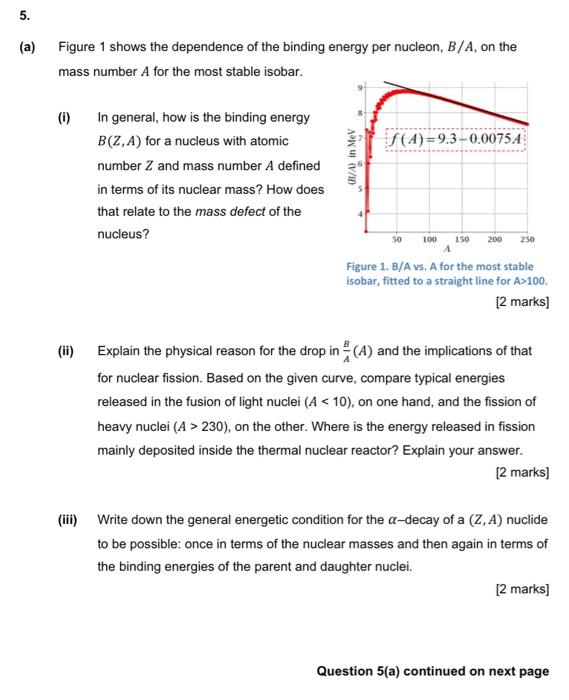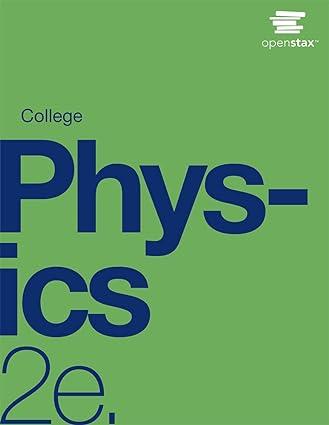Answered step by step
Verified Expert Solution
Question
1 Approved Answer
5. (a) Figure 1 shows the dependence of the binding energy per nucleon, B/A, on the mass number A for the most stable isobar.


5. (a) Figure 1 shows the dependence of the binding energy per nucleon, B/A, on the mass number A for the most stable isobar. (i) In general, how is the binding energy B(Z, A) for a nucleus with atomic number Z and mass number A defined in terms of its nuclear mass? How does that relate to the mass defect of the nucleus? (B/A) in MeV (4)=9.3-0.0075.A 50 100 150 200 250 A Figure 1. B/A vs. A for the most stable isobar, fitted to a straight line for A>100. [2 marks] (ii) Explain the physical reason for the drop in (A) and the implications of that for nuclear fission. Based on the given curve, compare typical energies released in the fusion of light nuclei (A < 10), on one hand, and the fission of heavy nuclei (A > 230), on the other. Where is the energy released in fission mainly deposited inside the thermal nuclear reactor? Explain your answer. [2 marks] (iii) Write down the general energetic condition for the a-decay of a (Z, A) nuclide to be possible: once in terms of the nuclear masses and then again in terms of the binding energies of the parent and daughter nuclei. [2 marks] Question 5(a) continued on next page (b) (iv) As shown in Figure 1, (4) can be fitted with a straight line for (A > 100): the black solid line represents f(A) = b + cA with b = 9.3 MeV and c = -0.0075 MeV. Find a condition for the mass number of the parent nucleus in the form A > Amin, which follows from the condition for the binding energies of the parent and daughter nuclei from part (ii), assuming they are both in the region where the linear fit gives a good approximation of . Determine Amin using the binding energy of the a-particle, Ba 28 MeV, and the given values of the fitting parameters b and c. [2 marks] Evaluate the threshold kinetic energy of the proton beams for the production of a n particle in a proton-proton collider to initiate the reaction p + p p+p+ n. The rest energy of the n particle is 547.3 MeV. Hint: Consider the available energy in the case of colliding beams with same kinetic energy and rest mass. [2 marks]
Step by Step Solution
★★★★★
3.47 Rating (147 Votes )
There are 3 Steps involved in it
Step: 1

Get Instant Access to Expert-Tailored Solutions
See step-by-step solutions with expert insights and AI powered tools for academic success
Step: 2

Step: 3

Ace Your Homework with AI
Get the answers you need in no time with our AI-driven, step-by-step assistance
Get Started


